- Viewpoints
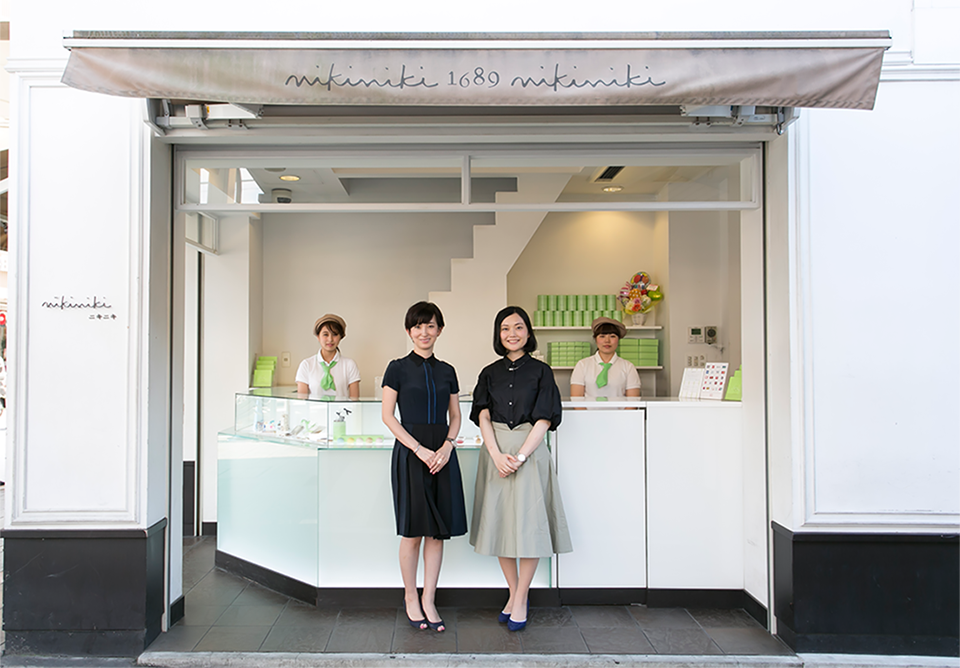 In front of one of Nikiniki’s two stores in Kyoto. Left: Kanako Suzuka, who was interviewed for this article. Right: Narumi Abe of Hakuhodo Brand & Innovation Design Division.
In front of one of Nikiniki’s two stores in Kyoto. Left: Kanako Suzuka, who was interviewed for this article. Right: Narumi Abe of Hakuhodo Brand & Innovation Design Division.Hakuhodo Brand & Innovation Design Division is a specialized unit of Hakuhodo that crafts pioneering solutions by leveraging its expertise in branding and innovation. “Brand Tamago” (brands in the making) is a series of articles appearing on the Hakuhodo website in which members of the Hakuhodo Brand & Innovation Design Division share insights they’ve gained in conversation with heirs to Japanese brands that are breaking new ground while building on tradition. Here we’ll be bringing you the most popular articles in the series.
The featured guest this time is Kanako Suzuka, executive director at Shogoin Yatsuhashi Sohonten Co. Ltd., the maker of the Nikiniki brand of yatsuhashi, a cinnamon-flavored rice dough cake that is a favorite Kyoto treat. Kanako was born into this family business, which goes back over 320 years. She talks about how the new brand came into being and what inspired its creation.
The interviewer is Narumi Abe of Hakuhodo Brand & Innovation Design Division, who studied in Kyoto at the university Kanako once attended and looks up to her as a role model.
Getting locals to enjoy the classic Kyoto tourist gift
Nikiniki is a new brand from Shogoin Yatsuhashi Sohonten, a traditional Kyoto confectioner that’s been making yatsuhashi for over 320 years. Launched in March 2011, the brand brings people a new way to enjoy yatsuhashi. While retaining the classic flavor people love, Nikiniki yatsuhashi are quite unlike their traditional counterparts in that they’re cute and colorful too. They’re sold at two branded locations in Kyoto, on Shijo Street at Kiyamachi and inside Kyoto Station, for takeout or to eat in. Unlike conventional yatsuhashi they have a short best-before date; some are for same-day consumption only.
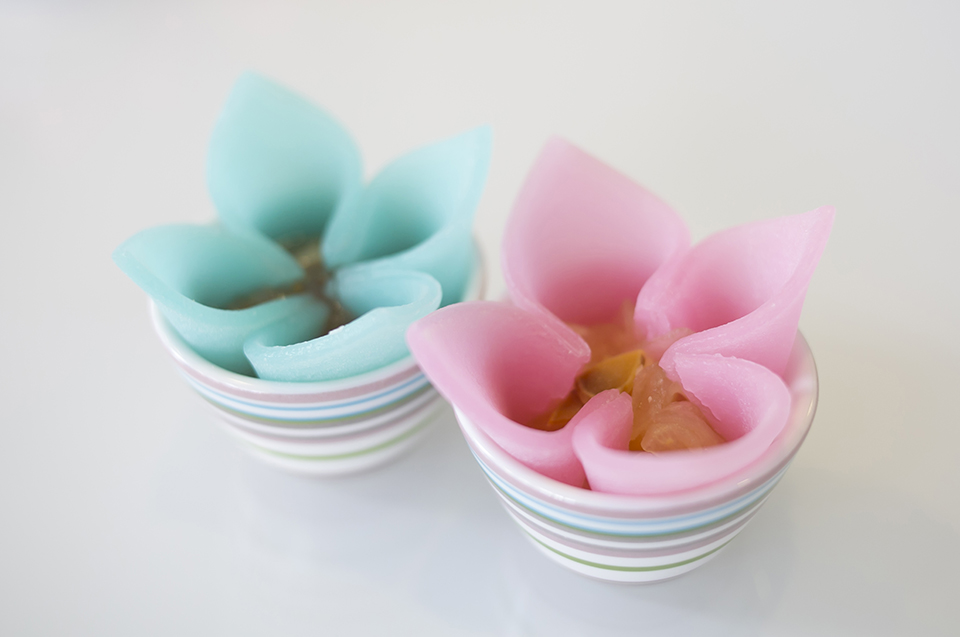 Some of the cute, colorful cakes available at Nikiniki. Shown here are samples of one of the store’s flagship items, Carré de Cannelle — unbaked yatsuhashi served with your choice of bean paste or fruit or vegetable confit filling.
Some of the cute, colorful cakes available at Nikiniki. Shown here are samples of one of the store’s flagship items, Carré de Cannelle — unbaked yatsuhashi served with your choice of bean paste or fruit or vegetable confit filling.ABE: The Nikiniki store on Shijo Avenue opened when I was in university. I was a frequent visitor to the area, and I recall being excited to notice this adorable new shop had just opened. I wasn’t aware at first that it sold yatsuhashi. Only when I eventually dropped by did I realize that it was a Shogoin Yatsuhashi outlet. Could you describe what motivated you to launch the Nikiniki brand?
SUZUKA: First of all, the desire to get Kyotoites eating yatsuhashi. People from other regions of Japan say they often eat yatsuhashi and always buy them as a gift when they visit Kyoto, but people who’ve lived in Kyoto for years typically avoided them, regarding them as something for tourists. But when you give them one, they happily eat it.
I was brought up eating yatsuhashi. On my way home from school I would drop by the store for a free sample, satchel on my back. That’s how much I loved them. They were all around me.
So I asked myself how we could get Kyotoites eating yatsuhashi. I couldn’t very well go around handing them out myself [laughs], so I came up with the idea of stripping yatsuhashi of its tourist gift associations. I challenged myself to create a product and retail design that, as you described, didn’t shout yatsuhashi at first sight.
Another motive was a desire to show the wide variety of ingredients and variations that could be enjoyed with yatsuhashi. Our first offering in the Nikiniki line was an item called Carré de Cannelle, a combination of unbaked yatsuhashi with apple confit. That combination was actually one my mother came up with at the store she ran when I was in elementary school. Knowing how good that tasted, it occurred to me there must be other things that could be combined with unbaked yatsuhashi. That led to various ideas for pairings — blueberries, tomato, spicy burdock root sticks.
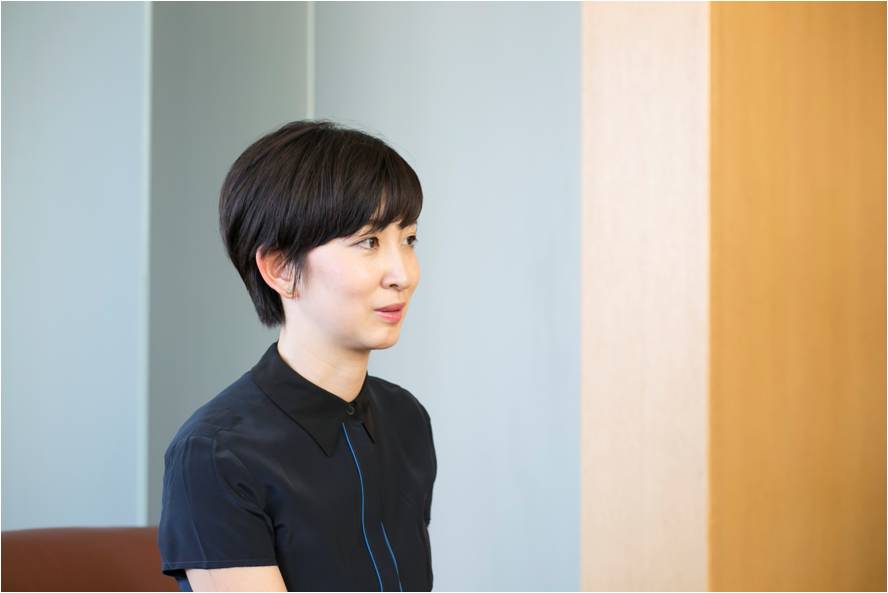
A new way to acquaint people with the great taste of yatsuhashi
ABE: When did you first come up with the idea of Nikiniki?
SUZUKA: I came up with the actual idea around the summer of 2010. But it originally occurred to me so long ago I’m not sure when it was. I’ve been saying I wished unbaked yatsuhashi came in a heart shape since I was in elementary school. Yatsuhashi taste so great that I’ve always wanted to make them look cuter as a gift to give to others. That all came together in Nikiniki.
ABE: What led you to turn Nikiniki into a separate brand from Shogoin Yatsuhashi Sohonten?
SUZUKA: We didn’t intend to do so at first. We ended up deciding to hive it off in the course of discussions at the company, out of a desire to make yatsuhashi more approachable for young people. But the Nikiniki cakes are now made by the same people who make Shogoin Yatsuhashi products; they’re both produced together. It’s often said that Nikiniki has done something new, but neither the company nor I think that’s the case at all. What’s the first thing the word “yatsuhashi” brings to mind?
ABE: Well, the unbaked variety, of course — a triangular piece of rice dough with bean paste filling.
SUZUKA: Right. Everyone says that. But in actual fact the original form of yatsuhashi is the crispy, baked variety, which has a history going back 327 years. Unbaked yatsuhashi only appeared in 1967, so it isn’t even a century old. The people who developed unbaked yatsuhashi back then weren’t so much trying to invent something new, I think, as to create something the people of the day would enjoy eating more, within the bounds of what was defined as yatsuhashi. That holds true also of Nikiniki. The baked and unbaked yatsuhashi it uses are those of Shogoin Yatsuhashi Sohonten. As far as I’m concerned, the Nikiniki brand exists as a way to acquaint people with Shogoin’s baked and unbaked yatsuhashi. It’s purely a gateway that leaves the essence of yatsuhashi intact.
ABE: I see what you mean. Nikiniki repackages yatsuhashi for contemporary tastes.
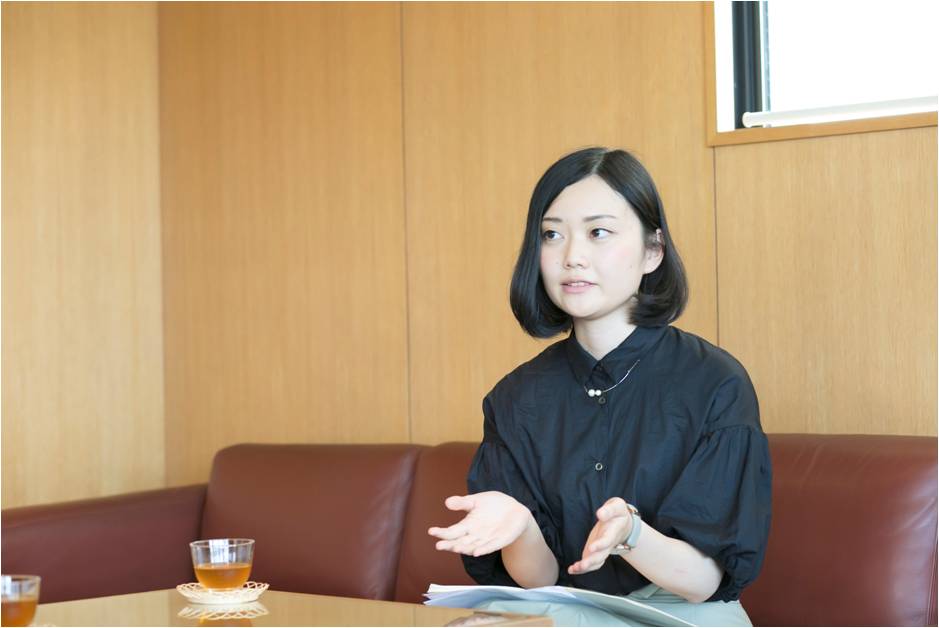
Reflecting half-forgotten Japanese seasonal customs in real time
ABE: What does Nikiniki particularly pride itself on?
SUZUKA: First off, we’re careful not to encroach on the domain of haute confectioners. We don’t want to be treading on their toes. We want to do stuff they usually don’t. To be specific, we do all we can to incorporate motifs that are in the limelight these days. We also reflect overseas celebrations like Halloween as much as we can.
But as far as motifs are concerned, we also make a point of depicting native Japanese customs in an appealing way. For example, do you know who Hososhi is? He’s the god who has the role of expelling demons during the February bean-throwing festival (or the person wearing his mask). Many people haven’t heard of him, so we’ve included a Hososhi motif in this brand line geared to young people. When a customer asks, “Who’s this?” we tell them, “It’s the god Hososhi. He still appears today during the bean-throwing festival at the Yoshida Shrine.”
ABE: That’s certainly one tradition that’s fallen by the wayside these days.
SUZUKA: Exactly. Same with flowers. Nowadays all kinds of flowers are available anytime, anywhere, so we focus on flowers of the season to remind people which flowers belong to which season. For example, when we bring out a cherry blossom design, we don’t decide to sell it from such-and-such a date to such-and-such a date; we only offer it while the cherry trees are actually in bloom. If the blossoms suddenly scatter, it gets replaced by a different confection the day after next. That’s something we can pull off because Nikiniki yatsuhashi are produced in small amounts. Through our confections we hope to convey to young people the custom of duly enjoying each season in real time, along with the meaning of doing so.
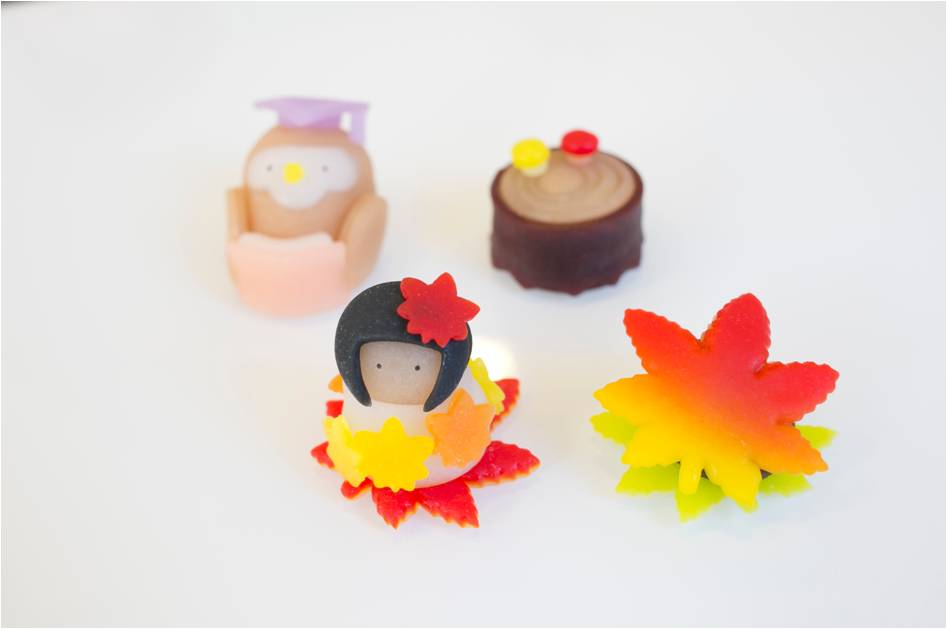 Fresh confections of the season from Nikiniki, made specially in autumn colors.
Fresh confections of the season from Nikiniki, made specially in autumn colors.Business hints from Kyoto. Ask first, Will the brand last a century or two?
ABE: Listening to you, I’m really struck by your respect for the traditional customs of Kyoto and Japan.
SUZUKA: That’s something I’ve developed especially of late. It’s not so much a reverence for old things as a belief that they hold many clues for the future.
ABE: That’s fascinating.
SUZUKA: It’s often said that when you do business in Kyoto, the question is whether your company will still be around a century or two from now. Will there still be a confection called yatsuhashi? That’s the first thing you think of when plotting strategy. Doing so is the norm at Kyoto’s traditional stores. I’ve come to believe that that approach may offer hints on how to showcase what makes Japanese companies unique on the global stage.
ABE: I couldn’t agree more. In branding, too, I believe it’s important to consider how your company can build a lasting relationship with customers and retain their affection. But that’s no easy task when you’re faced with the immediate goal of chalking up product sales. It’s hard to think a hundred years into the future, a time span that isn’t real for you.
SUZUKA: It doesn’t seem unreal to us at all. We talk all the time about things a century from now, and we customarily speak of events a century ago as if they happened yesterday.
Just the other day we were talking of Takayama, a float that used to take part in the procession at Kyoto’s Gion Festival. It disappeared from the procession exactly 190 years ago, but we merely describe it as being on leave. Just on leave.
ABE: Wow, that’s cool [laughs].
SUZUKA: A major reason for that may be that your own child or grandchild might be involved in the family business by then. For us the future is a matter of personal concern.
ABE: I see your point. Tradition can I imagine sometimes be a kind of burden, but you give the impression of wanting to passing it on from the past to the future as a matter of course, like a baton. That’s wonderful.
SUZUKA: Being at a company with so much history was at first a heavy weight on my shoulders, though. But now I’ve come to feel that that history is what lets me challenge myself in so many ways: it doesn’t put pressure on me, it supports me. That change in thinking may have been the turning point for me after the launch of Nikiniki.
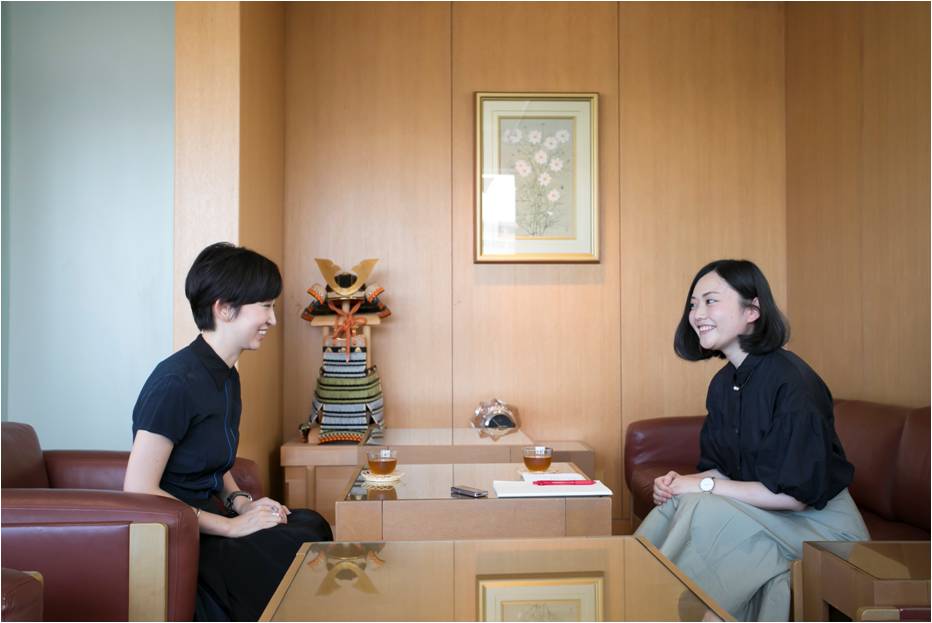
Flexibly adapting to the times while delivering the same eating pleasure
ABE: In our own branding work we feel that even if something’s already great, it won’t endure for the long term unless it’s more or less updated in order to preserve it. Finally, you said earlier that Nikiniki leaves the essence of yatsuhashi intact. What about it would you say you’ve left intact, and what would you say you’ve changed significantly to meet the needs of the day?
SUZUKA: At Nikiniki, or rather Shogoin Yatsuhashi Sohonten, our watchword is “Taste is tradition.” It’s not the taste itself we leave unaltered, but rather the customer’s eating pleasure. I believe that our taste buds change with the times. If we today were to eat something that was considered delicious in the Edo period (1603-1868), we’d probably say yuck [laughs].
The definition of yatsuhashi is rice flour and sugar and cinnamon, of course, so that we never change. We always make the best-tasting yatsuhashi within those bounds. But we alter the shape and color in many different ways if that’s going to create more opportunities for people to eat it.
ABE: Right. What’s in store for Nikiniki in the future?
SUZUKA: We’d like to create treats with designs that make people want to eat them on particular occasions. The Nikiniki line might end up evolving with the times into something very different from how it looks today.
ABE: Thank you very much for talking with me today.
• Link
The Shogoin Yatsuhashi Sohonten website (Japanese only): http://www.shogoin.co.jp/
Afterword: Brand Tamago insights
Hakuhodo Brand & Innovation Design Division believes that three components are now essential to any brand: spirit, style, and society. Spirit means the brand’s social significance. Style means its distinctive character — what makes it what it is. Society means the community that supports and rallies behind it. (See here for details.)
Here we examine the hints that Nikiniki yields on the future of brand building, focusing specifically on the question of spirit.
Spirit: Looking back on history for hints about the future
A century from now seems a long way in the future, so I was amazed when Suzuka-san said that she always thinks of a century from now as a matter of personal concern.
The Nikiniki brand certainly never would have seen the light of day if the idea had simply been to do something — anything — novel. It came into being out of Suzuka-san’s honest desire to ensure that people would still be eating the yatsuhashi she loves a century or two down the road. That really struck me.
Nikiniki exudes a great respect for the traditions of the past. The thing that makes the Nikiniki line so appealing is the way it skillfully incorporates traditional elements, such as how it reflects Japanese seasonal customs in real time. What then enables Suzuka-san to display this respect for tradition?
She said that in the course of launching the Nikiniki line she came to feel that tradition was a support rather than a weight on her shoulders. In constantly thinking of how to ensure a future for her beloved yatsuhashi, it seems, she came to regard tradition as the sum of the cumulative efforts of people who shared her dedication and love for yatsuhashi. When you realize that those who went before you were of the same mind as you, looking back on their intentions and the values they held dear can offer insights that will stand you in good stead in the future.
In branding, too, it’s often argued that you should revert to what was done in the past. But instead of viewing history as a mere fait accompli, think of the brand as the sum of the cumulative efforts of predecessors who were of the same mind as you. Delve more deeply into their intentions and the values they held dear. As with Nikiniki, you may discover clues to making the brand more attractive in the future.
Click here for further information on Hakuhodo Brand & Innovation Design Division.
Brand Tamago social media links
For information on the latest articles and inside tidbits on Brand Tamago interviews (in Japanese), visit:
Instagram→https://www.instagram.com/brandtamago/
Twitter→https://twitter.com/brandtamago












